The Ultimate Guide to Optimizing Your B2B Marketing Strategy.

You've likely spent countless resources developing and implementing your B2B marketing strategy. But how do you know if it's working as effectively as it could be?
The answer lies in regular optimization. By closely examining your strategy regularly and making minor tweaks, you can ensure it's always working to its fullest potential.
Today, we'll cover everything you need to know about optimizing your B2B marketing strategy for a more significant impact.
Table of contents
- What Is Optimization, Exactly?
- Why Should You Optimize Your B2B Marketing Strategy?
- Fundamentals To Optimize a B2B Marketing Strategy
- Tactics To Optimize Your Current B2B Marketing Strategy
- B2B Marketing Strategy Optimization Tactic #1: Eliminate Organizational Silos
- B2B Marketing Strategy Optimization Tactic #2: Use JBTD (Jobs To Be Done) To Find Untapped Customer Needs
- B2B Marketing Strategy Optimization Tactic #3: Analyze Current Customers To Find Hyper-Responsive Segments
- B2B Marketing Strategy Optimization Tactic #4: Analyze Noncustomers
- B2B Marketing Strategy Optimization Tactic #5: Prioritize Growth Channels
- Optimizing Your B2B Marketing Strategy: FAQs
- Closing Notes
What Is Optimization, Exactly?
Optimization, simply put, is the process of making something as effective as possible. In marketing, this means figuring out how to get the most results (e.g., leads, sales, and engagement) from your current strategy.
It's important to note that optimization is different from making wholesale changes to your strategy. You don't need to (and shouldn't) reinvent the wheel every time you want to see improvement. Instead, focus on making small changes that can have a significant impact.
Adopting a scientific approach will help you methodically test different aspects of your strategy to see what works best.
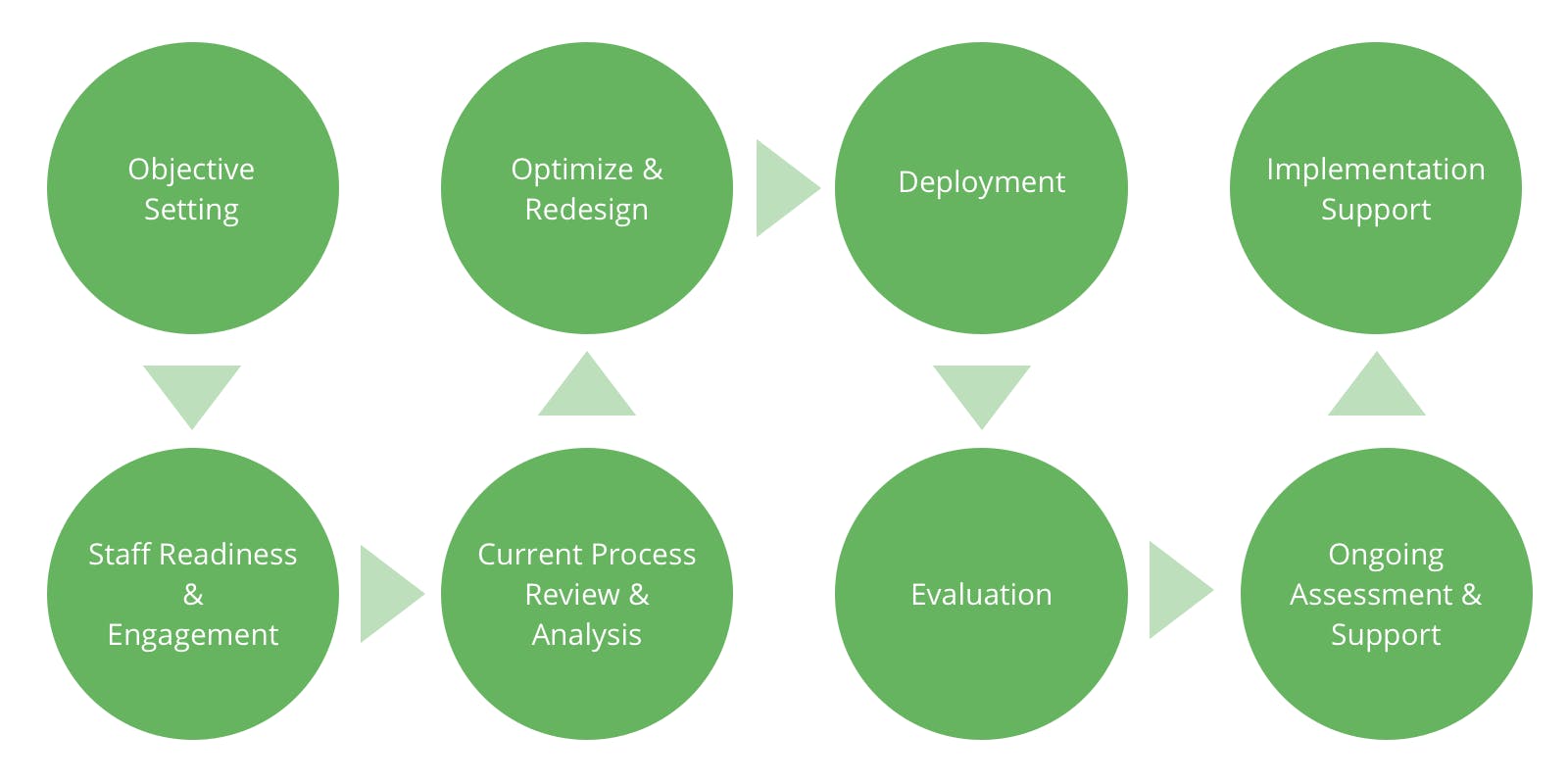
Even a tiny change can make a big difference when applied at scale. Changing one word in a website headline, for example, can result in a 47% increase in conversions.
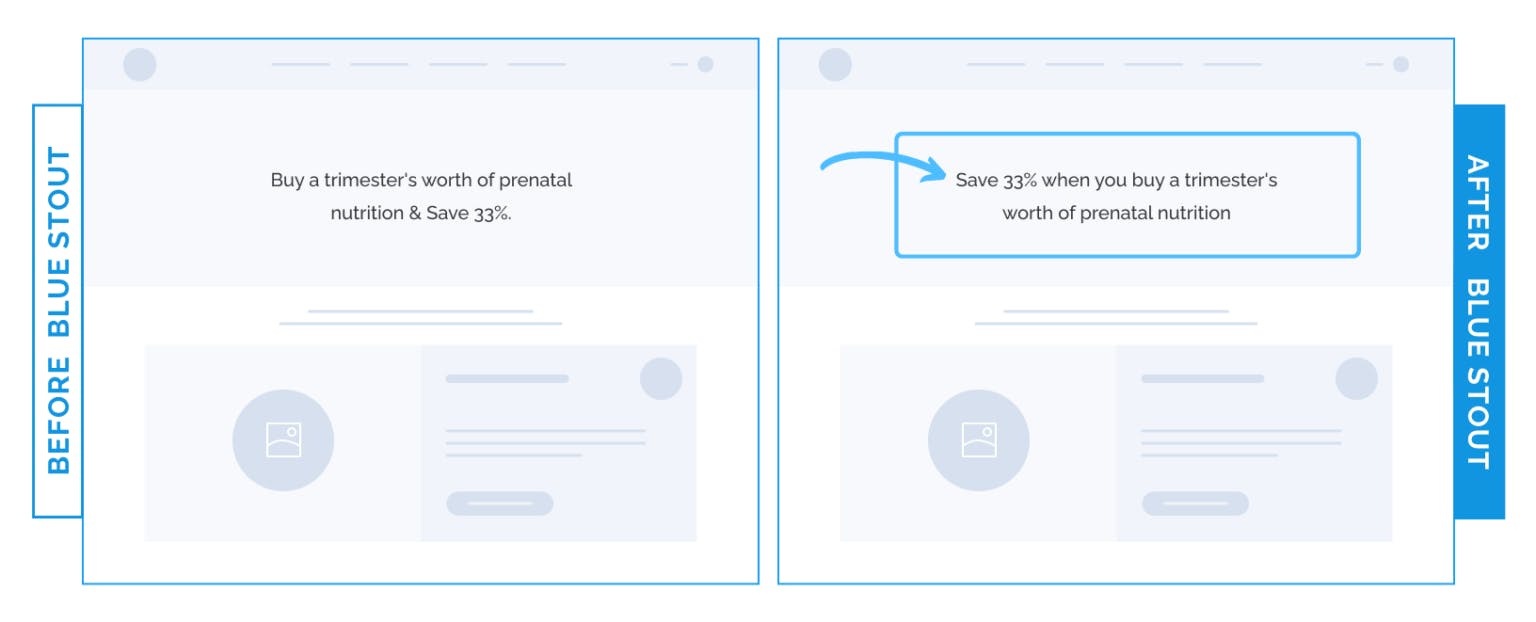
Of course, marketing strategy encompasses more than just website copy. You'll need to experiment with different tactics and channels to find the right mix for your business.
You might also need to change the way you measure success.
For example, suppose you're focused on demand generation. In that case, you might start tracking conversion rates (the number of website visitors who take the desired action, such as making a purchase).
This shift in perspective can be beneficial if you do not see the desired results. By focusing on conversions rather than traffic, you can ensure that the visitors you are getting are valuable to your business.
Why Should You Optimize Your B2B Marketing Strategy?
Experimental marketing isn't new. In Scientific Advertising, a book published in 1923, Claude Hopkins advocated a scientific marketing approach, saying that businesses should "test everything and keep the good."
But in the nearly 100 years since Hopkins wrote those words, many businesses have yet to catch on. Research suggests that roughly 70% of companies run less than four marketing experiments per month.
Considering that only 1 out of 8 experiments results in a significant improvement, most businesses are not testing enough to experience significant results.
This lack of experimentation can be costly. Many examples showcase the potential benefits of experimental marketing:
- Marian University: Increased conversions by 246% by testing different page variations.
- Axway: Saw a 291% ROI after experimenting with different PPC (Pay-Per-Click) segments.
- Brookdale Senior Living: Increased MRR by $106,000 after running several page experiments.
Adopting a continuous optimization mindset can help you avoid the cost of stagnation and ensure that your digital marketing strategy is always working at its best.
The more you experiment, the more you'll learn about your customers and what they want. This knowledge is valuable for marketing and product development, sales, and other areas of your B2B company.
It can also help you build a more agile business that can quickly adapt to change.
For example, when COVID-19 first hit, many businesses were forced to change their B2B marketing strategies rapidly. Those already experimenting and optimizing were in a much better position to adapt and continue seeing results quickly.
Instead of being caught off guard, they were able to quickly pivot and experiment with new tactics that would work in the current situation.
Of course, even the best marketing strategy won't be effective if it's not properly executed. Make sure you have the right team in place to carry out your experiments and implement the changes you want to see.
The right mix of skills and experience will be critical to your success. Look for team members who are not only experts in their field but also comfortable with change and willing to experiment.
With the right team in place, you can start testing different aspects of your marketing strategy to see what works best.
Fundamentals To Optimize a B2B Marketing Strategy
Finding the right marketing tactics can be challenging, especially for SaaS companies. You might not have the budget to try everything at once, and even if you do, you might not know where to start.
Before you start experimenting, it's crucial to have a plan. Decide what you want to achieve and what metric you'll use to measure success.
Here are a few tips to help you get started:
B2B Marketing Strategy Optimization Fundamental #1: Use Qualitative and Quantitative Data
To properly and accurately optimize a b2b marketing strategy, mix qualitative and quantitative data.
Qualitative data will give insights into how your customers feel and what they need from your business. You can gather this through customer interviews, surveys, and focus groups.
Quantitative data, on the other hand, will give you hard numbers to work with. This might include website traffic, conversion rates, and leads generated.
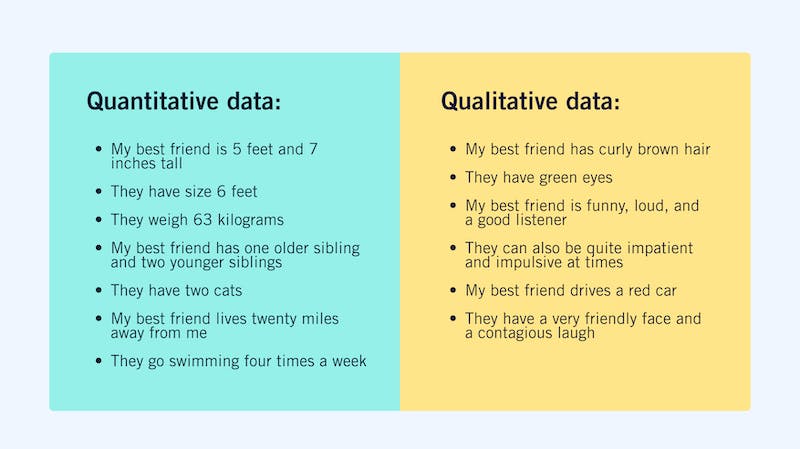
You'll need both types of data to optimize your marketing strategy appropriately.
Many organizations make the mistake of relying too heavily on one type of data or the other. This can lead to inaccurate conclusions and suboptimal results.
For example, let's say you're trying to decide whether to increase your budget for social media marketing.
Quantitative data might show that your current campaigns generate a good return on investment (ROI). But only looking at this data would be a mistake.
Qualitative data might reveal that customers from social media marketing campaigns tend to complain more and have a lower lifetime value (LTV) than those coming from content marketing.
Even though social media might have a good ROI, it might not be the best strategy for long-term growth.
Below you can find two ideas to get the right mix of quantitative and qualitative data:
Create a research matrix
Different research methodologies serve other purposes. To get a well-rounded view of your marketing strategy, use a mix of research methods.
This matrix can help you choose the proper research methods for your needs:
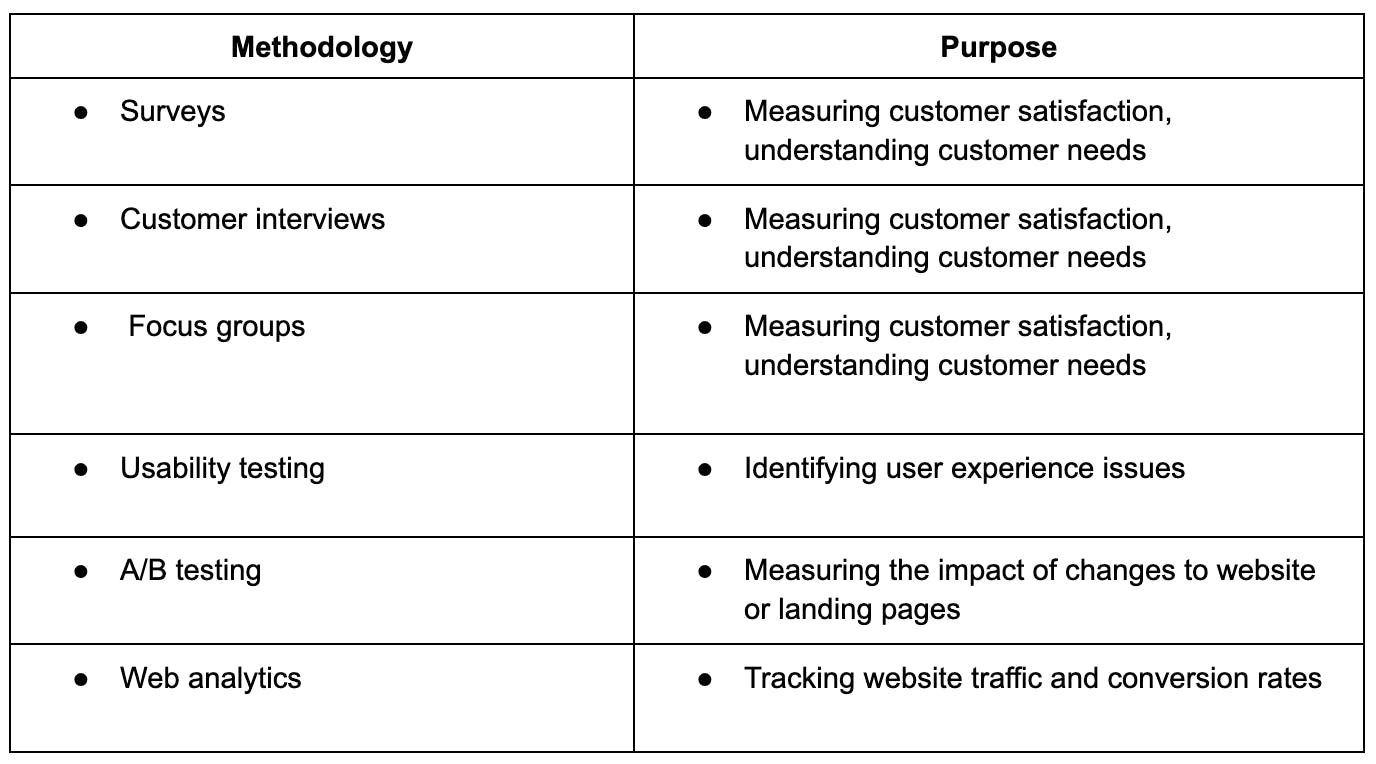
This example research matrix shows how you can use different research methodologies to gather various types of data.
Use a mix of primary and secondary data
Primary data is data that you collect yourself. This might include surveys, customer interviews, and A/B tests.
Secondary data is data that already exists. This might come from web analytics tools, research reports, or industry studies.
Both primary and secondary data have their advantages and disadvantages.
Primary data is more specific to your business and can give you insights you can't get from secondary data. However, it can be more expensive and time-consuming to collect.
Secondary data is less specific to your business but is usually cheaper and easier to collect.
To get the most accurate picture of your marketing strategy, mix primary and secondary data.
Test one change at a time
Somewhat paradoxically, the best way to get accurate results from your tests is only to test one change at a time.
If you test multiple changes at once, you won't be able to isolate the impact of each individual change. This makes it impossible to know which difference is responsible for any results you see.
For example, let's say you're testing two changes to your website:
- Adding a live chat widget
- Changing the color of your CTA buttons
If you see an increase in website traffic after making these changes, you won't be able to tell which difference is responsible. Was it the live chat widget? Or was it the CTA button color change?
To avoid this problem, measure the results of each change separately. This way, you'll be able to accurately attribute any changes in performance to the change you made.
B2B Marketing Strategy Optimization Fundamental #2: Use a Big Enough Sample Size
When conducting research, it's essential to use a large enough sample size. This ensures that your results are accurate and representative of the population.
For surveys, a general rule of thumb is to aim for a minimum of 100 responses.
For website tests, you'll need to test on a significant portion of your traffic to get accurate results. Research suggests that 25,000 visits are a good starting point, but you may need more or less depending on the complexity of your test.
Of course, the larger your sample size, the more reliable your results will be. But you also need to balance this with the available time and resources.
Set up your tests properly
To get accurate test results, you need to set them up properly. This includes ensuring your sample is representative of each buyer persona, using a control group, and avoiding self-selection bias.
Your sample should be representative of your target audience
When conducting research, it's crucial to ensure your sample is representative of your target audience. This ensures that your results are accurate and will apply to your B2B company.
For example, let's say you're conducting a survey about pet ownership.
You want to make sure that your sample includes a representative mix of people who own different types of pets. This way, you can ensure that your results are accurate and applicable to the general population.
If your sample is not representative of your target audience, your results may not be accurate or applicable.
To ensure that your sample is representative, randomly select people from your target audience to participate in your research.
Use a control group
The term "control group" refers to a group of people who do not receive the treatment or change that you're testing.

Control groups are important because they allow you to isolate the impact of the change you're testing. This is essential for accurate results.
For example, let's say you're testing a new button color on your website.
To measure the impact of this change, you should compare the results of people who see the new button color to those who don't see the new button color.
Your control group is the people who don't see the new button color.
By comparing the results of the two groups, you can isolate the impact of the new button color and see if it's having a positive or negative effect.
Avoid self-selection bias
Self-selection bias occurs when people self-select into a study or research project. This can happen if people are not randomly selected to participate.
For example, let's say you're surveying social media usage.
If you post the survey on social media and people self-select into the survey, you may get biased results. People who self-select into the survey are likely to be more interested in social media than the general population.
This means that your results will not be representative of the general population and may not be accurate.
Tactics To Optimize Your Current B2B Marketing Strategy
At this point, you already understand the fundamentals of running an experimental marketing program. Let's look at a few strategies to optimize your current B2B marketing strategy to make it more effective.
B2B Marketing Strategy Optimization Tactic #1: Eliminate Organizational Silos
Marketing has undergone quite a transformation in recent years. The rise of digital marketing has led to a more data-driven and customer-centric approach to marketing.
Although marketing strategy still falls under the marketing department's purview, executing that strategy is often an organizational effort.
86% of C-level execs believe that removing silos between departments is vital for better use of data and analytics.

Organizational silos refer to the divisions between departments within a company. Silos can prevent information from being shared between departments and make it difficult to coordinate efforts.
In a marketing context, silos can prevent the sales and marketing teams from working together effectively.
For example, the sales team may have valuable insights into customers' wants and needs. If this information is not shared with the B2B marketing team, the marketing team may create campaigns that are not aligned with the customers' needs.
Eliminating silos between departments can help to ensure that everyone is working towards the same goal. It can also help ensure everyone has access to the same information.
Let's explore a few ideas to improve your strategy through organizational changes:
Create a single source of truth for the "four big"
Even though the entire organization impacts your marketing strategy, four areas have a significant role: product development, sales, customer success, and marketing.
Your product or service dictates what you're selling and to whom. Sales provides feedback about what's working and what's not.
Customer success gives insights into how your product or service is actually being used.
And marketing pulls all of these areas together to create a cohesive strategy.
To ensure everyone is working with the same information, create a "single source of truth." This is a central repository for information that everyone in the organization can access.
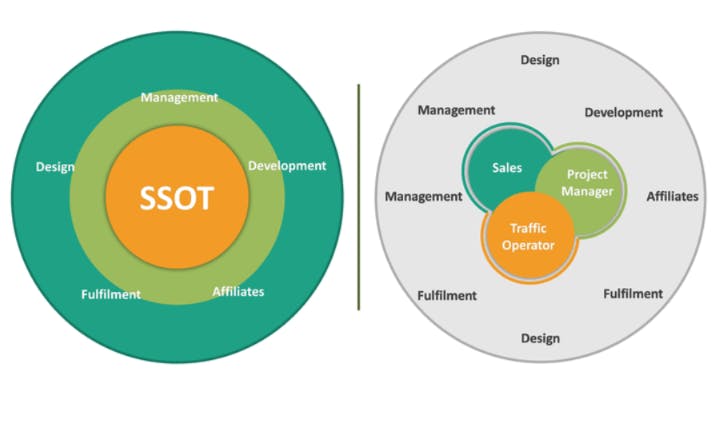
There are a few different ways to create a single source of truth, like using a customer relationship management (CRM) system or data warehouse.
You can also create a wiki or intranet site where everyone can access and update information.
Centralizing information makes it easier for everyone to access the information they need. It also makes tracking changes easier and ensures that everyone is working with the most up-to-date information.
Build cross-functional teams
Cross-functional teams bridge the gap between departments by bringing employees from different departments to work on a common goal.
For example, you could create a team with sales, marketing, customer success, and product development representatives. This team could be responsible for creating a new product or launching a new marketing campaign.
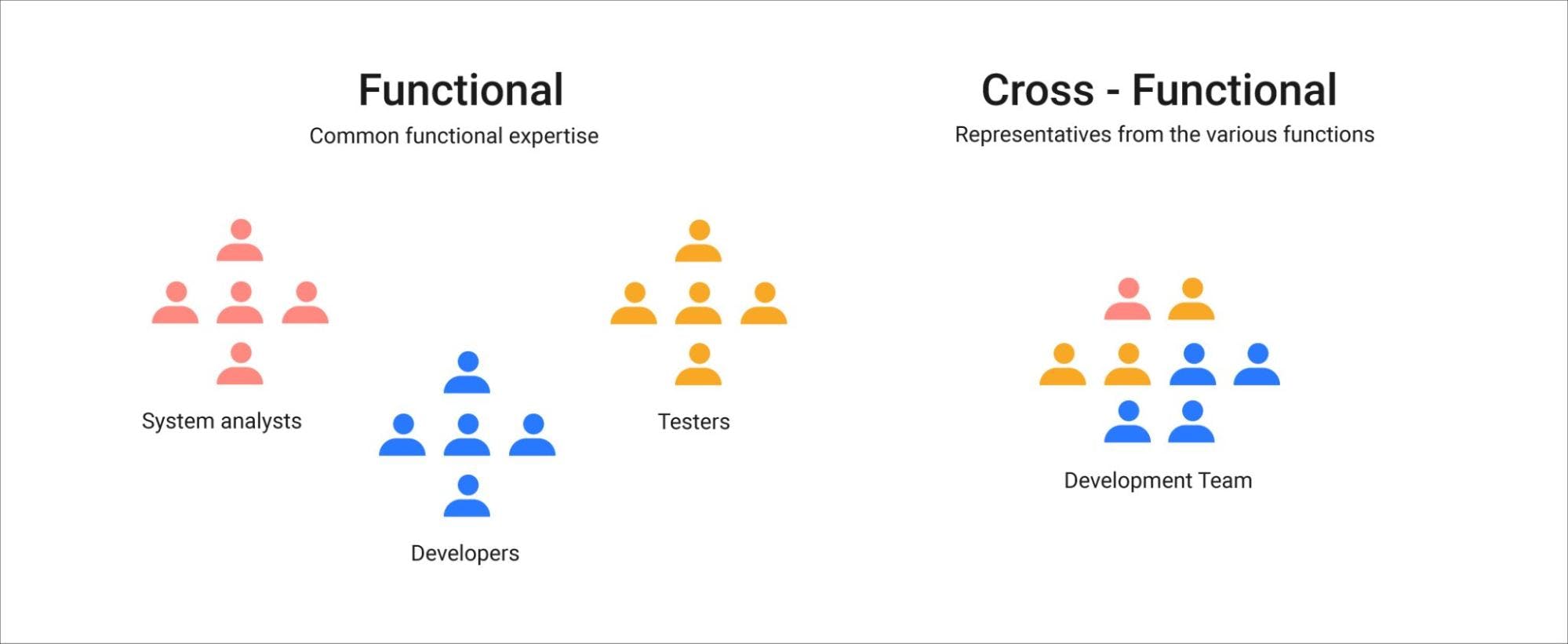
Cross-functional teams can help to improve communication and collaboration between departments. They can also help to ensure that everyone is working towards the same goal.
Implement data-driven decision-making
Data should be at the heart of your marketing strategy. After all, data can give you insights into what's working and what's not.
Data-driven decision-making means basing your decisions on data, rather than hunches or gut feelings.
To make data-driven decisions, you need access to the right data. This data should be collected and organized to make it easy to access and analyze.
Once you have the data, you need to know how to interpret it. You also need to have a plan for how you're going to act on the insights you gain from the data.
An experimental journal can help you to do this. This is a document where you track the progress of each experiment, as well as the results.
For example, let's say you're experimenting to see if a new lead magnet will increase sign-ups for your newsletter.
In your experimental journal, you would track how many people sign up for your newsletter before and after implementing the lead magnet. You would also track other relevant information, like the number of people visiting your website or the conversion rate of your sign-up form.
You can use a simple Google sheet or Excel document to track your experiments. Or, you can use a more sophisticated tool like Mixpanel or KISSmetrics.
Scheduling experiments is also crucial. Give each experiment enough time to run to gather accurate data.
At the same time, you don't want to wait too long to implement the results of an experiment. This can lead to lost opportunities.
Creating a schedule will help you strike the right balance. For example, you could plan to run each experiment for two weeks and then review the results at the end of each month.
You can also use your experimental journal to track the progress of your marketing strategy as a whole. This will help you see how each experiment fits into the bigger picture.
B2B Marketing Strategy Optimization Tactic #2: Use JBTD (Jobs To Be Done) To Find Untapped Customer Needs
To improve your marketing strategy, understand what "jobs" your product or service is hired to do. This means understanding the problem that your target market is trying to solve.
By understanding the "job" that your product or service does, you can create marketing messages and strategies that speak to those needs.

JTBD goes beyond traditional research methods, like surveys and focus groups. It's a framework that helps you understand your target market's underlying needs in specific contexts.
Let's use an example:
Three people go to a restaurant.
- Person 1 is looking for a quick bite to eat.
- Person 2 wants to celebrate a special occasion.
- Person 3 wants to impress a business client.
All three people are looking for a meal, but they have different jobs to be done.
The first person is looking for convenience, the second person is looking for a special experience, and the third wants a way to build relationships.
If you're the restaurant owner, you need to understand all three jobs. You can't simply offer a "meal" and expect to meet all of your customers' needs.
Understanding each customer's specific needs and crafting your marketing messages and experiences accordingly will improve your overall results.
B2B Marketing Strategy Optimization Tactic #3: Analyze Current Customers To Find Hyper-Responsive Segments
Once you understand the needs of your target market, identify which segments are most likely to respond to your marketing messages.
Analyze your current customer base, looking at factors like customer lifetime value, customer churn rate, and customer acquisition cost. This will help you identify which segments are most valuable to your
business and which ones are most responsive to your marketing efforts.
For example, let's say you're a B2B brand that sells project management software. You might find that your best customers are small businesses with 10-20 employees. They have a high lifetime value and a low churn rate.
You might also find that businesses in the retail industry are more likely to sign up for your software. But, they have a lower lifetime value and a higher churn rate.
This information can help you focus your marketing efforts on the most valuable segments of your business.
B2B Marketing Strategy Optimization Tactic #4: Analyze Noncustomers
Existing and potential customers are always the best source of information about your product or service. But, they're not the only source.
You can also learn a lot from people who don't buy from you. Analyzing noncustomers can help you understand why they're not buying and what you need to change to win them over.
This is especially important if you're trying to enter a new market. You need to understand the specific needs of that B2B market and what's stopping them from buying your product or service.
For example, let's say you're a B2B software company trying to enter the healthcare market. After researching the needs of the healthcare market, you might find that the most significant barrier to entry is compliance with HIPAA regulations.
This information can help you modify your product or service and marketing strategy to meet the needs of the healthcare market.
Finding commonalities among your noncustomers can help you to better understand the B2B market and craft more effective marketing messages.
B2B Marketing Strategy Optimization Tactic #5: Prioritize Growth Channels
It's crucial to continuously reinvest in your growth channels to ensure they remain strong and provide consistent results. However, you also need to be strategic about investing your resources.
Prioritizing growth channels means allocating more of your budget to the most effective channels for your B2B business.
A rule of thumb is to look for low-cost, high-impact channels that you can scale. This will help you to maximize your ROI and grow your B2B brand quickly.
For example, if you're a B2B software company, you might find that your best customers come from referrals. Referral programs are a great way to generate new leads and grow your business.
Referral programs invert the traditional marketing funnel by starting with your best customers and asking them to refer you to their friends and colleagues.
This is a great way to grow your business while reducing customer acquisition costs quickly.
But you can't simply stop there. You need to continuously invest in your referral program to ensure it's effective. This might mean offering referral incentives or making it easy for customers to refer your business.
Using the right referral management system, you can automate your referral program and make it easier for customers to refer your business.
With Reditus, for example, you can create, track, manage, and optimize a referral program in one place.
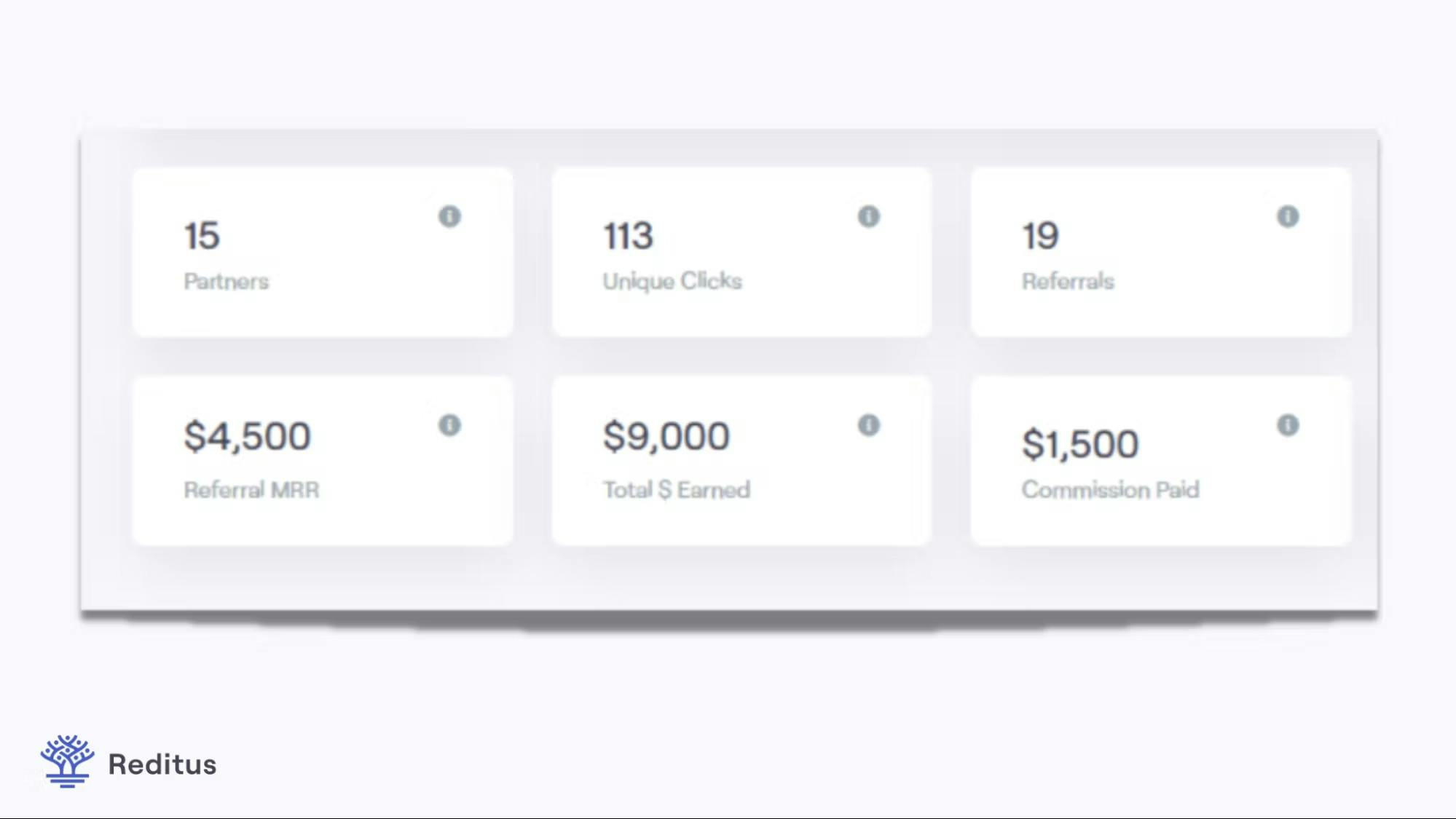
Reditus helps you build a new marketing channel by turning your best customers into your best salespeople.
Of course, referral programs are just one example of a high-impact, low-cost marketing channel. There are many other options depending on your business and industry.
The important thing is to identify the channels that work best for your B2B business and invest in them accordingly.
- Influencer marketing: Due to social media, word-of-mouth marketing is more powerful than ever. You can tap into this trend by working with influencers who can promote your products or services to their massive audiences.
- B2B content marketing: A solid content strategy mixed with targeted B2B SEO works as a top-of-the-funnel marketing tool to attract new leads and convert them into customers.
- Outbound marketing: Although outbound marketing is considered a more traditional marketing tactic, it can still be effective when done right. Outbound marketing techniques like cold calling or direct mail can help you reach new customers and grow your business.
- Email marketing: A great way to stay in touch with your customers and keep them updated on new products or services.
To learn more about effective marketing channels, tactics, and strategies, read “9 B2B Marketing Strategies That Work (Almost) Every Time.”
Optimizing Your B2B Marketing Strategy: FAQs
At this point, you should better understand the steps you need to take to optimize your B2B marketing strategy.
To wrap up, let’s answer a few common questions about optimizing B2B marketing strategies.
How do you optimize a B2B sales funnel?
A B2B sales funnel is the series of steps a customer takes from lead to purchase.
To optimize your B2B sales funnel, you need to identify where customers are dropping off and address those problems. This could mean changing the messaging, simplifying the checkout process, or offering discounts.
What are the KPIs for B2B marketing?
Common B2B marketing KPIs include lead-to-customer conversion rate, cost per lead, website traffic, and sales cycle length. But, of course, every business is different, so you should also measure the KPIs most relevant to your goals.
How do you measure the ROI of B2B marketing?
Measuring the ROI of your B2B marketing efforts can be tricky, but optimizing your strategy is essential.
Start by calculating the cost of each marketing campaign, then track how many leads and customers it generates. This will give you a good indication of whether or not your campaigns are working.
What are the best B2B marketing tactics?
The best B2B marketing tactics depend on your business and industry. However, some popular tactics include referral programs, influencer marketing, B2B content marketing, outbound marketing, and email marketing.
Regardless of your tactics, measure their performance against your goals and adjust accordingly.
That way, you can ensure that your B2B marketing strategy is continually optimized and working as effectively as possible.
Closing Notes
Maximizing the impact of your marketing efforts doesn't have to be complicated. Following these simple tips ensures you get the most out of your marketing strategy.
Analyzing your customer data, understanding your target market, and investing in growth channels are great ways to boost your marketing ROI.
By taking a data-driven marketing approach, you can ensure that your marketing efforts positively impact your business.

